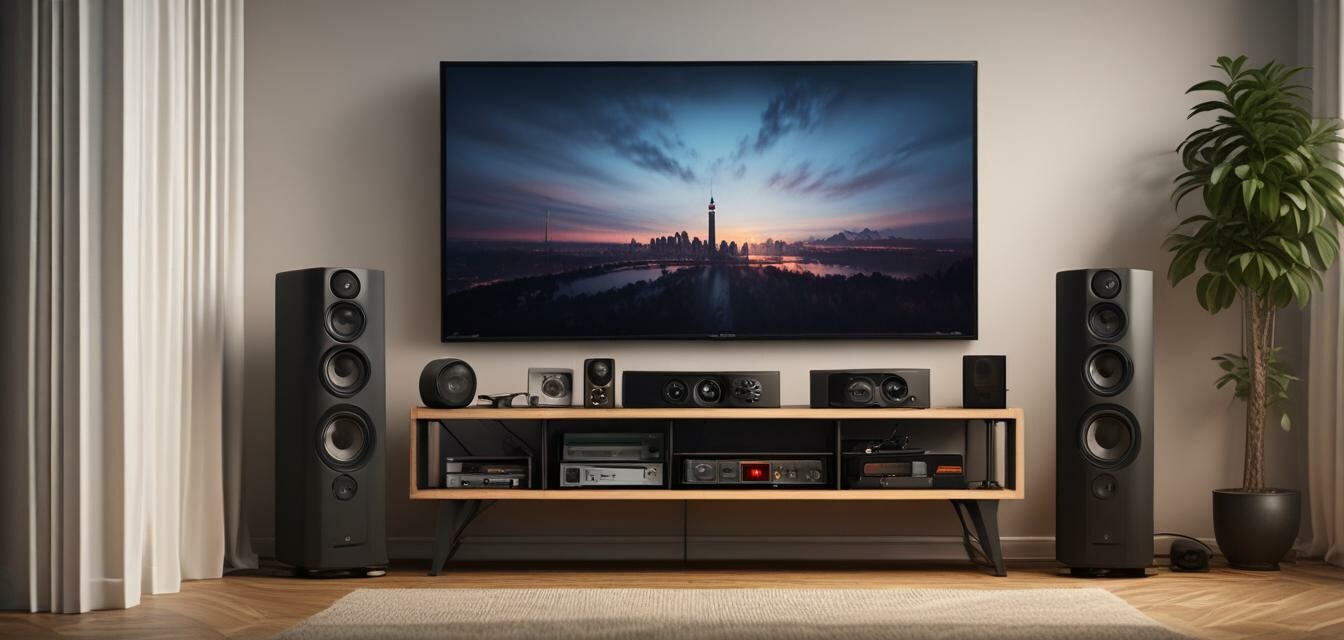
How to Achieve Balanced Sound in Your Setup
Key Takeaways
- Understanding sound frequency ranges is essential for balance.
- Placement of speakers dramatically affects audio quality.
- Using equalizers can enhance your sound experience.
- Regularly maintaining your audio equipment ensures longevity.
- Investing in quality cables can improve sound clarity.
In our modern world, audio plays a crucial role in how we enjoy entertainment. Whether you're an audiophile, a casual listener, or just trying to enhance your home setup, achieving balanced sound is vital for an optimal listening experience. This article will provide practical advice on how to achieve that goal across various audio devices.
Understanding Sound Frequencies
Before we dive into adjustments and settings, it's crucial to understand the frequency ranges involved in sound. Sound is generally broken down into three primary categories:
| Frequency Range | Description |
|---|---|
| Low Frequencies (20 Hz - 250 Hz) | These include bass tones, which provide depth and fullness to sound. |
| Mid Frequencies (250 Hz - 4 kHz) | These are essential for conveying vocals and most instruments. |
| High Frequencies (4 kHz - 20 kHz) | This range adds clarity and brightness to sound, including treble tones. |
Speaker Placement Tips
Placement of your audio devices can dramatically affect the sound balance. Here are some tips:
- Distance from walls: Keep your speakers at least a foot away from walls to avoid sound reflections that can muddy your audio.
- Height: Position your speakers at ear level for better sound clarity.
- Angle: Angle your speakers towards your listening position for direct sound.
Using Equalizers for Fine-Tuning
An equalizer (EQ) is a powerful tool for adjusting the frequency balance of your audio. Here’s how you can use it:
- Start with a flat setting, where all frequencies are at the same level.
- Boost or cut specific frequency ranges to suit your listening preference.
- Listen to reference tracks that you know well to guide your adjustments.
Common EQ Settings
The following table provides common EQ settings recommended for various audio genres:
| Genre | Recommended Adjustments |
|---|---|
| Rock | Boost low and mid frequencies for guitar chords and vocals. |
| Classical | Slight boost in highs for strings and woodwinds. |
| Jazz | Highlight mid frequencies for smooth vocals and instruments. |
Maintaining Your Setup
Regular maintenance can ensure that your audio setup remains at peak performance. Here are a few tips:
- Clean your speakers and cables regularly to avoid dust build-up.
- Check and replace old cables if you notice any loss of sound quality.
- Update firmware on digital devices to ensure compatibility and performance.
Pros
- Enhanced listening experience
- Improved clarity across all ranges
- Customized sound preferences
Cons
- Can require ongoing adjustments
- Learning curve for beginners
Investing in Quality Equipment
Finally, remember that quality matters. Investing in quality audio gadgets can significantly impact sound performance. For more insights on picking the right gadgets, explore our guide on buying guides.
Tips for Beginners
- Start simple; focus on proper placement before making complex adjustments.
- Don’t shy away from experimenting with EQ settings.
- Listen from different positions to check for balance differences.
Achieving balanced sound in your setup doesn’t need to be overwhelming. By understanding sound frequencies, placing your speakers correctly, utilizing equalizers, maintaining your equipment, and investing in quality devices, you can create an extraordinary listening experience.
If you're interested in exploring more about enhancing your audio setup, check out our article on audio gadgets to discover products that can elevate your audio experience.
